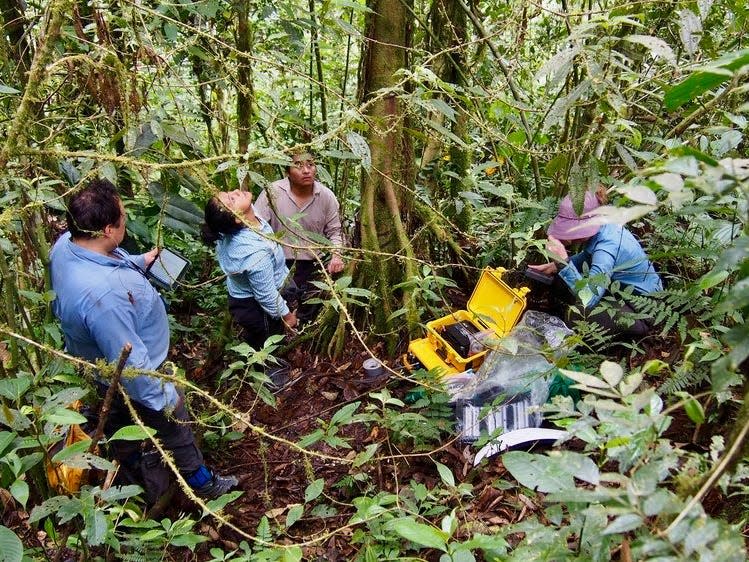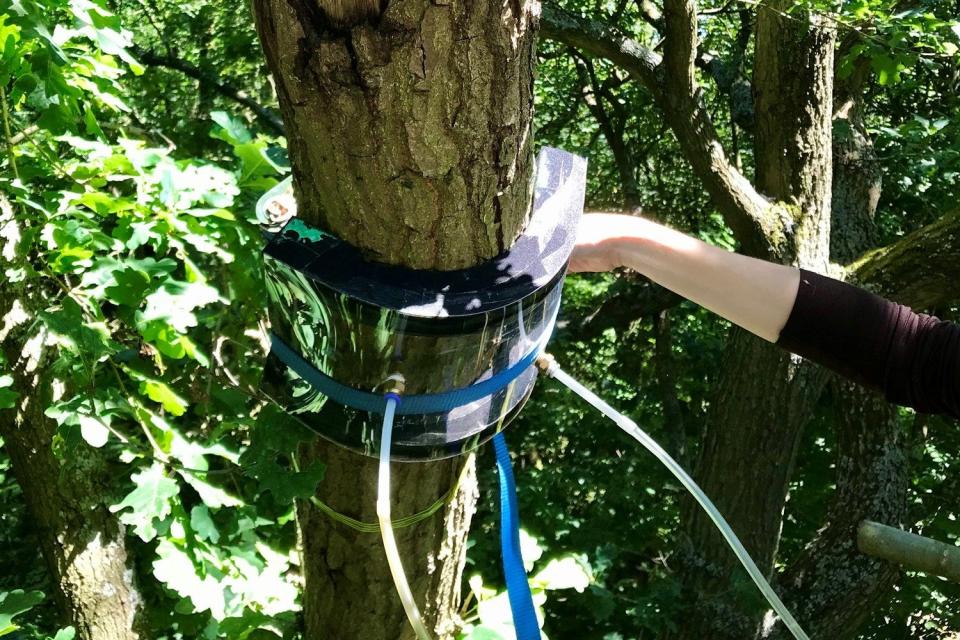Scientists found a groundbreaking new reason to plant more trees

Tree bark absorbs significant methane, a potent greenhouse gas.
Methane has 80 times the warming power of carbon dioxide over two decades.
Trees' methane absorption could be twice that of Arctic permafrost emissions.
Trees are a more powerful climate solution than previously known.
Microbes living in tree bark are absorbing methane, a potent greenhouse gas, from the atmosphere on a massive scale, a study published in the journal Nature found. Trees are sucking up just as much, if not more, methane than soil does — the only other known natural sink on Earth.
"We've been undervaluing trees for their climate benefits," Vincent Gauci, a professor at the University of Birmingham and the lead author of the study, told Business Insider. "This is a new nature-based climate solution."
Both natural and human-made methane emissions from wetlands, cows, landfills, and burning fossil fuels are on the rise. The gas has 80 times the warming power of carbon dioxide over two decades, which is why climate scientists say one of the fastest ways to slow global warming is cutting methane emissions and harnessing natural ways to remove it from the atmosphere.
While trees' ability to breathe in carbon dioxide and pump oxygen back out is well understood, their relationship to methane is more complex. Gauci said he was surprised by the findings, which were pieced together over a decade by a team of international researchers measuring methane from trees in countries including Brazil, Peru, Panama, the UK, and Sweden.
In a 2017 study, they found that trees in Amazon floodplains emitted more methane than they absorbed. However, as researchers expanded their data collection to tropical, temperate, and boreal forests that are above floodplains — also known as upland — an opposite trend emerged.

"We thought that if all this methane was being emitted from wetlands, maybe upland forests were contributing small amounts of emissions, too," Gauci said. "What we found is that at the bottom-most meter of the tree, they do give off a little bit of methane. But the situation switches when you go up the trunk. We measured 2, 5, and 11 meters above the forest floor."
Tropical trees absorbed the most methane, probably because their methane-eating microbes thrive in warm conditions. But on average, trees' woody surface makes them about 10% more climate-beneficial than previously thought, the researchers found.
Gauci noted that there are far more upland forests than wetland forests. To estimate the full scope of climate benefits, his team had to quantify the surface area of all the tree bark in the world for the first time. They used "terrestrial laser scanners" that detect 3D tree structures.
If all the tree bark in the world were laid flat, it would cover Earth's land surface, the study found. And it may be removing between 25 million tons and 50 million tons of methane from the atmosphere, the researchers calculated. At that higher level, trees could be removing a couple times as much methane than what's released by Arctic permafrost that's melting, Gauci said.
He added that the findings helped close a discrepancy in the global methane budget. Satellites detect lower methane emissions than what scientists have found on the ground, implying that such "bottom-up" studies either overestimated methane emissions or missed a sink.
"Tree woody surfaces add a third dimension to the way life on Earth interacts with the atmosphere, and this third dimension is teeming with life, and with surprises," Yadvinder Malhi, a University of Oxford professor and coauthor of the study, said.
Read the original article on Business Insider

